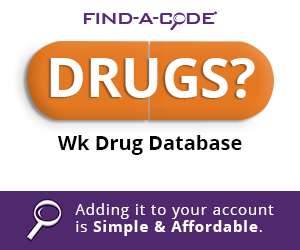
Teaching Physician Rules Primary Care Exception
November 24th, 2009 - Codapedia Editor
CMS has developed a specific set of rules for academic settings. These rules allow a teaching or attending phyisician to bill for services provided jointly by themselves and residents in approved Graduate Medical Education (GME) programs. Different services (endoscopy, E/M, major surgery) have different requirements for the attending's participation and documentation, in order to bill for the service.
The Primary Care Exception allows the attending to bill for certain, low level E/M services without personally seeing the patient. The program must provide primary care to pateints, and are typically Family Practice, Internal Medicine, Geriatrics, Pediatrics and OB/GYN. The program must attest in writing that they meet the requirements, and keep that statement in their files. The program does not need to send that statement to CMS or to their carrier or MAC.
Only these services are eligible to be billed in this way: 99201--99203, 99211--99213, and the Welcome to Medicare visit.
In order to bill under the primary care exceptin, the teaching physician must:
- Supervise no more than four residents at a time
- Not have any other responsibilities during this time
- Assume responsibility for the care
- Assure that appropriate treatment is provided
- Review with the resident during or immediately after every visit the history, exam, diagnosis and treatment plan
- Document their participation in the review and care provided to every beneficiary
Append modifier GC to claims for services provided under the primary care exception. This modifier does not affect payment; it is informational only.
###
Questions, comments?
If you have questions or comments about this article please contact us. Comments that provide additional related information may be added here by our Editors.
Latest articles: (any category)
Artificial Intelligence in Healthcare - A Medical Coder's PerspectiveDecember 26th, 2023 - Aimee WilcoxWe constantly hear how AI is creeping into every aspect of healthcare but what does that mean for medical coders and how can we better understand the language used in the codeset? Will AI take my place or will I learn with it and become an integral part of the process that uses AI to enhance my abilities?
Specialization: Your Advantage as a Medical Coding ContractorDecember 22nd, 2023 - Find-A-CodeMedical coding contractors offer a valuable service to healthcare providers who would rather outsource coding and billing rather than handling things in-house. Some contractors are better than others, but there is one thing they all have in common: the need to present some sort of value proposition in order to land new clients. As a contractor, your value proposition is the advantage you offer. And that advantage is specialization.
ICD-10-CM Coding of Chronic Obstructive Pulmonary Disease (COPD)December 19th, 2023 - Aimee WilcoxChronic respiratory disease is on the top 10 chronic disease list published by the National Institutes of Health (NIH). Although it is a chronic condition, it may be stable for some time and then suddenly become exacerbated and even impacted by another acute respiratory illness, such as bronchitis, RSV, or COVID-19. Understanding the nuances associated with the condition and how to properly assign ICD-10-CM codes is beneficial.
Changes to COVID-19 Vaccines Strike AgainDecember 12th, 2023 - Aimee WilcoxAccording to the FDA, CDC, and other alphabet soup entities, the old COVID-19 vaccines are no longer able to treat the variants experienced today so new vaccines have been given the emergency use authorization to take the place of the old vaccines. No sooner was the updated 2024 CPT codebook published when 50 of the codes in it were deleted, some of which were being newly added for 2024.
Updated ICD-10-CM Codes for AppendicitisNovember 14th, 2023 - Aimee WilcoxWith approximately 250,000 cases of acute appendicitis diagnosed annually in the United States, coding updates were made to ensure high-specificity coding could be achieved when reporting these diagnoses. While appendicitis almost equally affects both men and women, the type of appendicitis varies, as dose the risk of infection, sepsis, and perforation.
COVID Vaccine Coding Changes as of November 1, 2023October 26th, 2023 - Wyn StaheliCOVID vaccine changes due to the end of the PHE as of November 1, 2023 are addressed in this article.
Medicare Guidance Changes for E/M ServicesOctober 11th, 2023 - Wyn Staheli2023 brought quite a few changes to Evaluation and management (E/M) services. The significant revisions as noted in the CPT codebook were welcome changes to bring other E/M services more in line with the changes that took place with Office or Other Outpatient Services a few years ago. As part of CMS’ Medicare Learning Network, the “Evaluation and Management Services Guide” publication was finally updated as of August 2023 to include the changes that took place in 2023. If you take a look at the new publication (see references below),....

